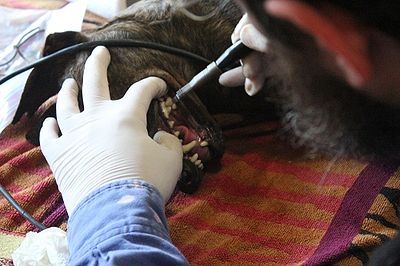
Stem cells are undifferentiated cells that have the ability to become specialized cells such as skin, bones, muscles, etc. The two main sources of stems cells are embryos at the embryonic stage of development (blastocyst) and adult tissue. They can be found in bone marrow, blood vessels, muscles, skin, liver, the brain, nasal mucosa, fatty tissue.
There are no federal regulations for stem cell therapy in pets and it has been used for horses, dogs and cats.
Stem cell therapy is generally used for arthritis, tendon and leg injuries, hip dysplasia, joint and muscle problems.
The pet is anesthetized and fatty tissue is removed from the abdomen or shoulder blade area. The tissue is then sent to a laboratory where the stem cells are removed and then sent back in injectable syringes. Remaining stem cells may be frozen for future use.
The stem cells are then injected into the area needed where they are expected to regenerate new cells. The cells are said to heal, reduce inflammation, block the forming of scar tissue.
At the University of California, Davis, Dr. Richard Vulliet, a professor in the molecular biosciences department, is studying stem cells from bone marrow to see if degenerative myelopathy, a spinal cord disease affecting German Shepherds and Pembroke Welsh Corgis, can be helped with this therapy.
The cost of the therapy usually ranges between $2,000-$3,000 and there have been many success stories. While many pet owners may be
demanding stem cell treatment for their pets, it should be noted that success and side effects are still considered by many doctors as unknowns.
Cats suffering with Chronic Renal Failure (CRF) and Inflammatory Bowel Disease (IBD) are treated in an educational setting and are considered experimental.


